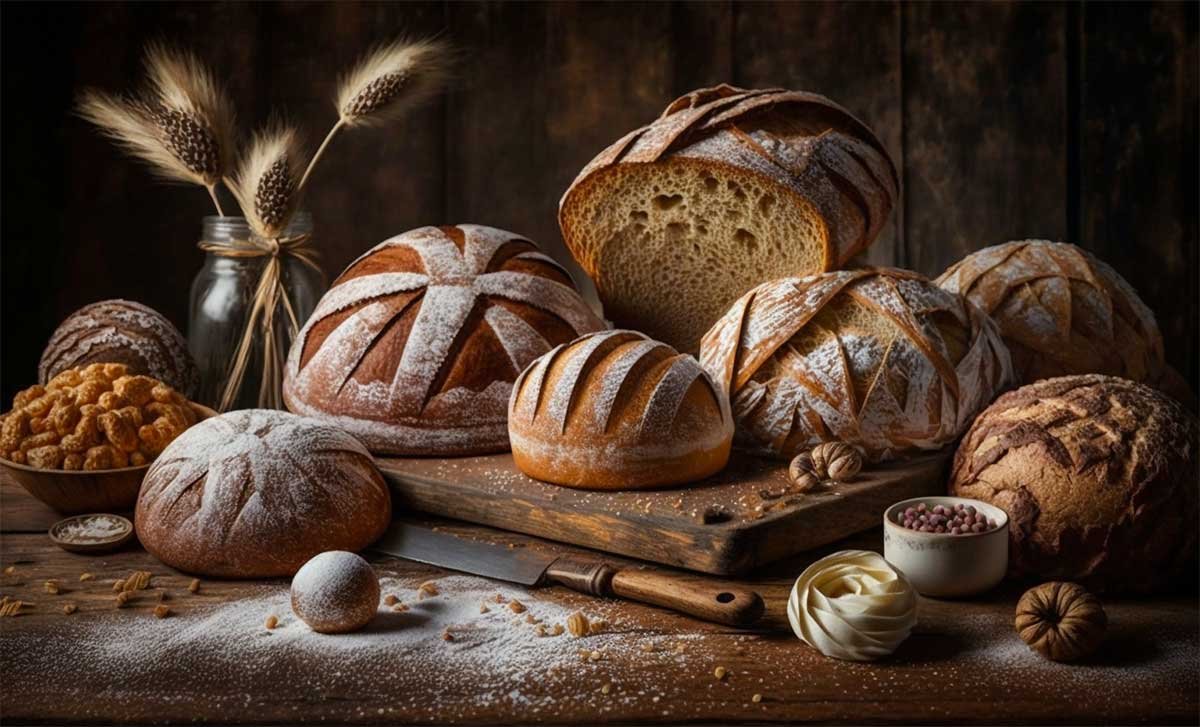
Making bread at home is one of the most rewarding experiences in the kitchen. Not only does fresh-baked bread fill the house with an irresistible aroma, but it also allows you to enjoy a loaf that’s fresh, full of flavor, and free of preservatives or additives commonly found in store-bought bread. However, for homemade bread to be truly exceptional, there are some key tips and tricks every baker should know. In this article, we will explore 5 essential tips for making the best bread at home. These tips are designed to help you achieve a soft, airy crumb, a crispy crust, and a flavor that will make you never want to buy bread from the store again.
1. Choose the Right Ingredients: The Foundation of Great Bread
The first step in making great bread starts with selecting the right ingredients. While it may seem simple, the quality of your ingredients directly impacts the final result. Here are some key points to keep in mind:
- Quality Flour: Flour is the main ingredient in bread, so choosing a high-quality flour is essential. There are various types of flour: all-purpose, bread flour, whole wheat, or rye flour. Bread flour, which is rich in gluten, is ideal for breads that need more structure, such as baguettes or traditional loaves.
- Yeast: Yeast is the leavening agent that makes the bread rise, creating a light, airy crumb. You can use either fresh yeast or dry yeast, depending on what you have on hand. Fresh yeast often requires activation in warm water, while dry yeast can be added directly to the flour. It’s crucial to make sure your yeast is fresh and not expired, as old yeast will not cause your bread to rise properly.
- Water: Water is vital for forming the dough. Be sure to use warm water (about 25-30°C or 77-86°F) to activate the yeast properly. Too much water can make the dough too sticky, while too little will result in a dry, dense loaf. Water also helps dissolve other ingredients like salt and sugar and facilitates gluten development.
- Salt and Sugar: Though salt and sugar aren’t the primary ingredients, they greatly affect the flavor and texture of the bread. Salt enhances flavor, while sugar provides a touch of sweetness and helps the yeast ferment more efficiently. The amount of each ingredient should be measured accurately, as too much salt can inhibit yeast activity, and too much sugar can cause the crust to burn.
2. The Importance of Kneading: The Technique that Defines Texture

Kneading is one of the most important steps in the bread-making process. It’s the moment when the ingredients come together to form a smooth dough and gluten begins to develop. Gluten is the network of proteins that gives bread its structure, allowing it to rise during fermentation.
- Manual or Machine Kneading: Kneading by hand can be a very satisfying experience as it allows you to feel how the dough’s texture changes. However, using a stand mixer is also perfectly fine. The key is to knead the dough until it becomes soft, elastic, and no longer sticky. This usually takes about 8-10 minutes of hand kneading, or around 5-7 minutes in a stand mixer.
- The Right Dough Consistency: The dough should be soft and slightly sticky, but not so sticky that it clings to your hands. If the dough is too sticky, you can add a bit more flour, but be careful not to add too much. If it’s too dry, you can add a little more water. A good test for kneading is the “windowpane test”: take a small piece of dough and stretch it with your fingers. If you can form a thin, translucent sheet without the dough tearing, the gluten is well-developed.
3. Fermentation: Let the Dough Breathe
Fermentation is a crucial step in bread-making. It’s the process where the yeast produces carbon dioxide, causing the dough to rise and become light and airy. There are two key stages in fermentation: the initial fermentation and the final fermentation after shaping the dough.
- Initial Fermentation: After kneading, the dough should be placed in a lightly oiled bowl, covered with a clean cloth or plastic wrap. This resting period usually lasts 1-2 hours, depending on the room temperature. The dough should double in size during this time. If the environment is very cold, you can let the dough rise in a warmer place, or even inside an oven with the light on.
- Final Fermentation: Once the dough has risen, it’s time to shape it. You can shape it into a ball, loaf, baguette, or any other form you prefer. After shaping, let the dough rest for another 30-45 minutes before baking. This final resting period allows the dough to ferment further and results in a more open crumb.
4. Baking: Temperature and Humidity Matter
Baking is the final step in bread-making. The heat from the oven causes the bread to rise further (called “oven spring”), while the crust becomes golden and crisp. To achieve great bread, the oven temperature is key.
- Oven Temperature: Generally, breads should be baked in a preheated oven at temperatures between 220°C and 250°C (430°F to 475°F). Larger or denser breads, such as sourdough or rye bread, may require a lower temperature. If you’re making yeast bread, a higher temperature is usually best for creating a crispy crust. To help the crust form properly, place a tray of water at the bottom of the oven to create steam.
- Baking Time: Baking times vary depending on the size and type of bread. Smaller loaves usually take 25-35 minutes to bake, while larger loaves may require 40-50 minutes. A good way to check if your bread is done is to tap the bottom of the loaf. If it sounds hollow, the bread is cooked through. You can also use a kitchen thermometer; the internal temperature of the bread should be around 90-95°C (194-203°F) when fully baked.
5. Let the Bread Cool: Patience is Key

Once the bread comes out of the oven, it’s important to let it cool before slicing. Although the temptation to cut into fresh-baked bread is strong, slicing it while it’s still hot can ruin the texture and shape of the crumb. The bread should cool on a wire rack to allow air to circulate and set the crumb. This process usually takes about 30 minutes to an hour, depending on the size of the loaf.
Cooling also allows the starch in the crumb to set, resulting in a better texture when sliced. Additionally, the bread becomes easier to handle once it’s cooled a bit.
Conclusion: The Perfect Bread is Within Reach
Making homemade bread may seem daunting at first, but with the right tips and some practice, anyone can create delicious loaves right in their own kitchen. Remember, the quality of the ingredients, proper kneading, fermentation, oven temperature, and cooling time are crucial factors in achieving bread with a light crumb, crispy crust, and incredible flavor. Don’t be afraid to experiment and adjust recipes to your taste. The perfect loaf of bread is just a matter of practice and patience. So, begin your baking journey and enjoy the wonderful bread you can make at home!




